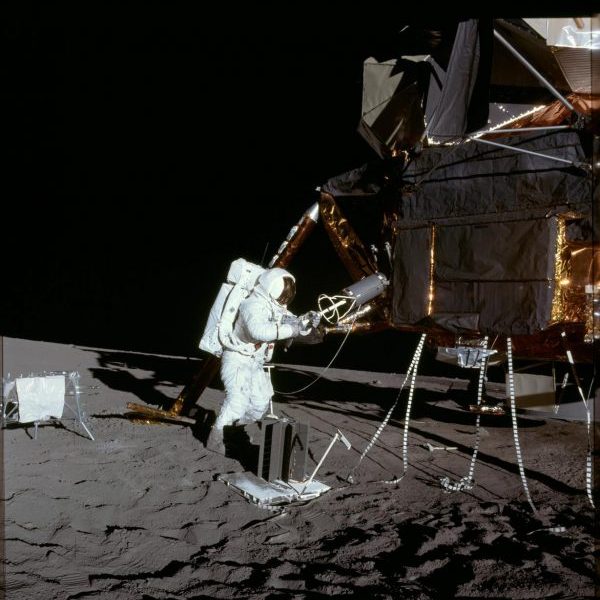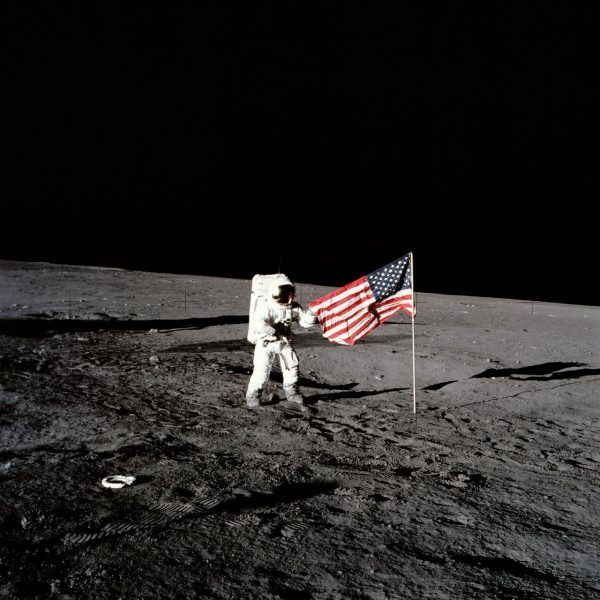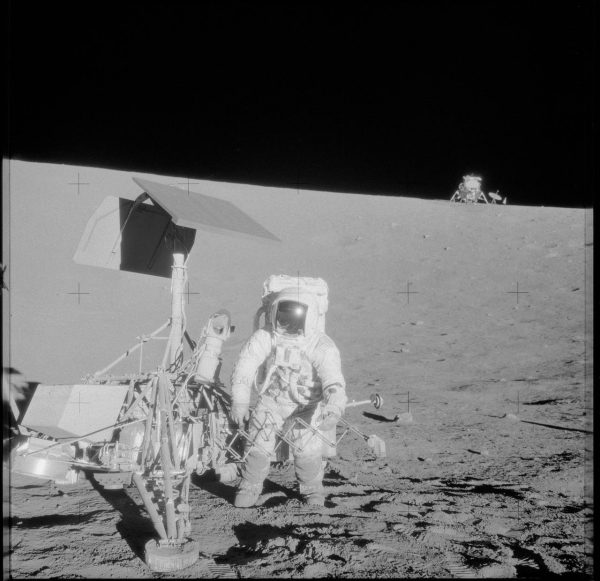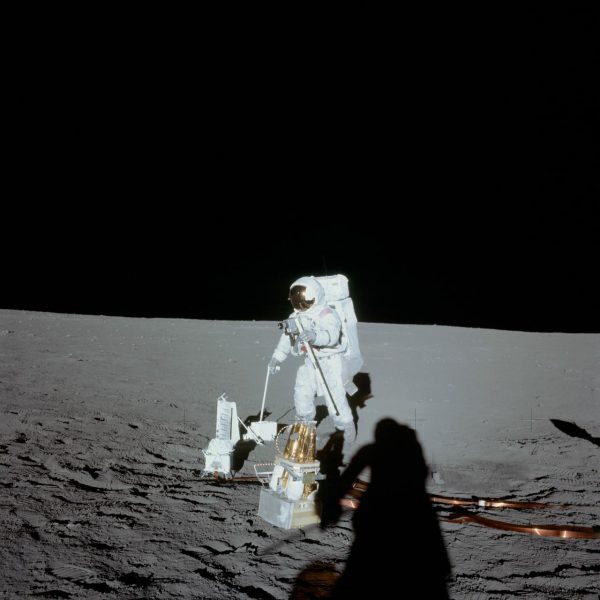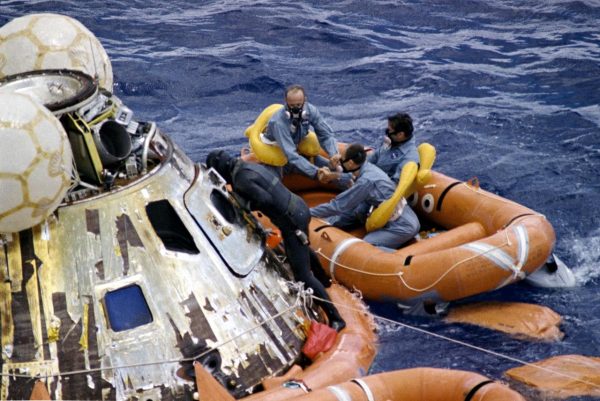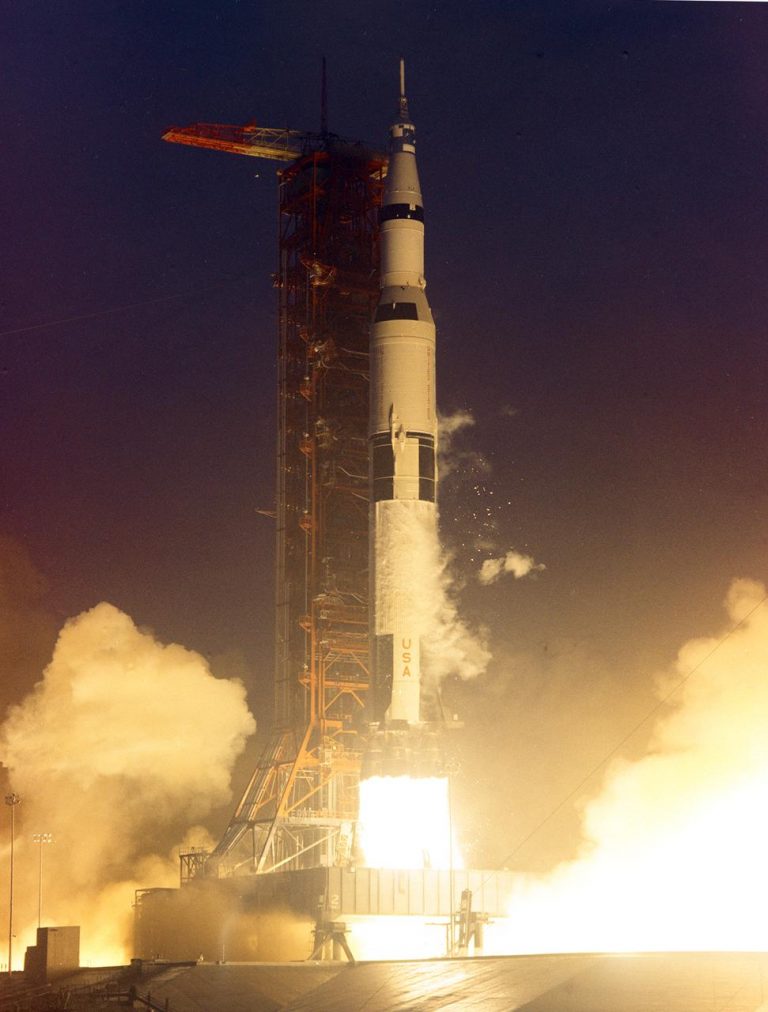
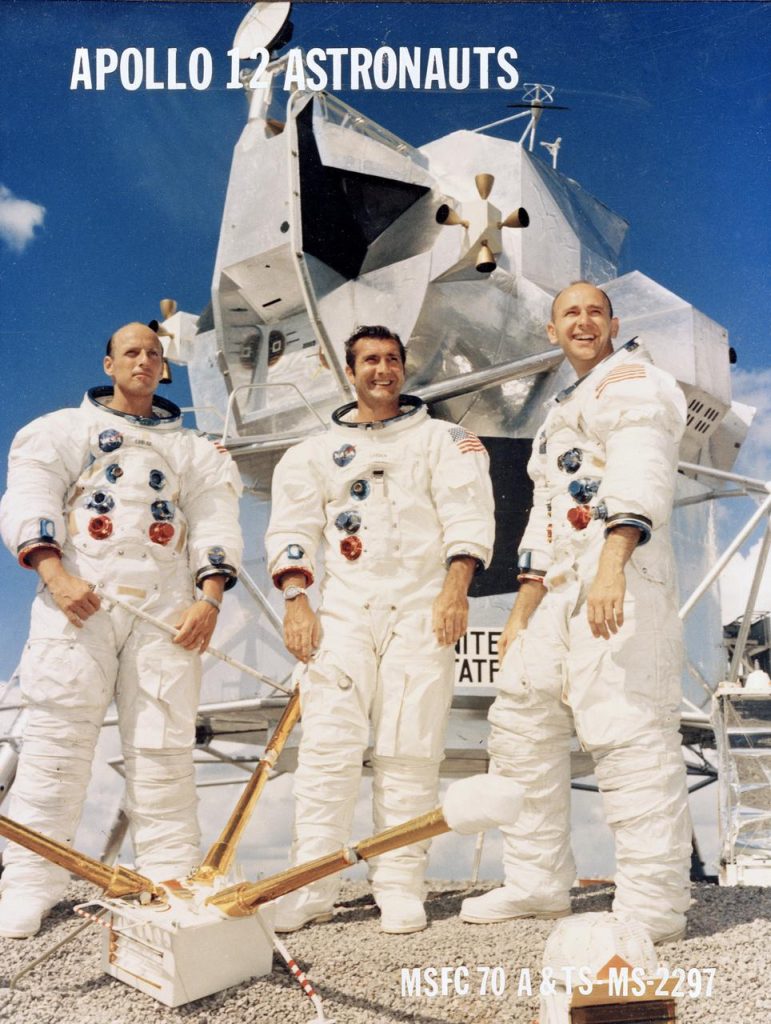
On Nov. 14, 1969, at 11:22 a.m. EST. Apollo 12 lifted off from Launch Pad 39A at NASA’s Kennedy Space Center in Florida–after being struck twice by lightning! Carried by a Saturn V rocket, the Apollo 12 capsule, nicknamed the Yankee Clipper, launched mission crew Commander Charles “Pete” Conrad Jr., Pilot Richard F. Gordon and Lunar Module Pilot Alan L. Bean towards the moon for an encore of the Apollo 11 landing.
Those two lightning strikes caused launch controllers to lose telemetry contact at 36 seconds, and again at 52 seconds. “I guess the most serious thing was the second lighting strike, which we weren’t aware of,” Conrad said during a technical debrief after the mission. “I was under the impression that we lost the platform because of low voltage but apparently that’s not the case.”
Luckily, the lightning did not cause any serious damage. Crew members Conrad and Bean entered the lunar module (LM) to check for any impacts from the lightning strike. They found none and transferred back to the command and service module (CSM), continuing the mission and its objectives.
Apollo 12 had several objectives beyond a repeat performance of a moon landing:
- a selenological inspection;
- surveys and samplings in landing areas;
- development of techniques for precision-landing capabilities;
- further evaluations of the human capability to work in the lunar environment for a prolonged period of time;
- deployment and retrieval of other scientific experiments;
- photography of candidate exploration sites for future missions; and
- retrieve portions of the Surveyor III spacecraft, which had soft-landed on the moon April 20, 1967, a short distance from the selected landing site of Apollo 12.
The journey to the moon took multiple days, but each had a purpose:
Nov. 15, a midcourse maneuver changed Apollo 12’s trajectory to prepare for later insertion into a non-free-return lunar orbit, the first “hybrid” trajectory in Apollo flights. It was also the day when the second telecast occurred en route to the moon, showing the interior of the Yankee Clipper.
Nov. 17, Apollo 12 went behind the Moon at about 97 miles up and the first lunar orbit insertion burn began, placing the spacecraft into an elliptical orbit.
Nov. 18, a second lunar orbit insertion burn altered Apollo 12 to an orbit 76 miles above the Moon. That same day, Conrad and Bean entered the LM. They separated from the CSM at 107 hours and 54 minutes into the flight.
Finally, on Nov. 19, 109 hours, 23 minutes into the mission, the LM began its powered descent to the Moon.
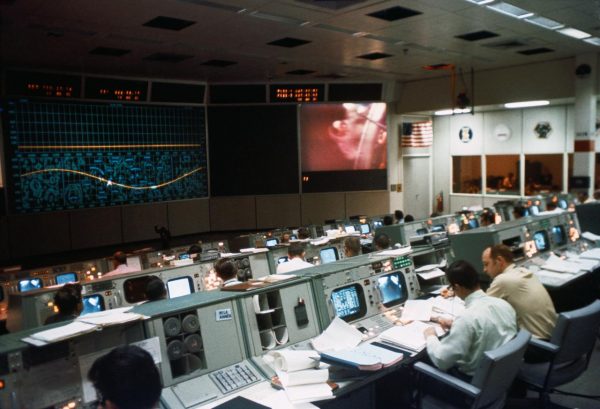
Emerging from behind the moon, the crew was able to re-establish contact with Earth, which allowed Mission Control to discover a discrepancy in orbit data readings. Using a newly developed powered-flight data processor, Mission Control was able to send the actual trajectory data and correction maneuver information to the LM crew.
With Conrad controlling the descent semi-manually for the last 500 feet, a precision landing occurred at about 110 hours, 32 minutes into the mission, and closer to the target than expected. Intrepid landed in the Ocean of Storms–approximately 950 miles west of where Apollo 11 had landed.
While astronauts Conrad and Bean descended in the LM “Intrepid” to explore the Ocean of Storms region of the moon, astronaut Gordon remained with the CSM “Yankee Clipper” in lunar orbit. Gordon, orbiting 69 miles up, was able to see both the Intrepid and Surveyor through the use of a 28-power sextant telescope.
Three hours after the landing–at 115 hours, 10 minutes into the mission–Conrad opened Intrepid’s hatch to begin the first lunar extravehicular activity (EVA) for the Apollo 12 crew. In their first lunar exploration, Conrad spent three hours, 39 minutes outside Intrepid, and Bean logged two hours, 58 minutes on the lurain.
During this EVA, Conrad collected lunar surface samples and deployed both the S-band communication antenna and the solar wind experiment. During the exploration, the astronauts discussed their findings by voice communication with geologists in Houston, who provided advice about which samples to retrieve.
After the second EVA on Nov. 20, the LM ascent stage fired for about seven minutes, putting Intrepid into an initial orbit of 10 by 54 miles for rendezvous and docking with the Yankee Clipper. The return flight was uneventful, and on Nov. 24, Apollo 12 ended its 10-day flight by splashing down in the Pacific Ocean
